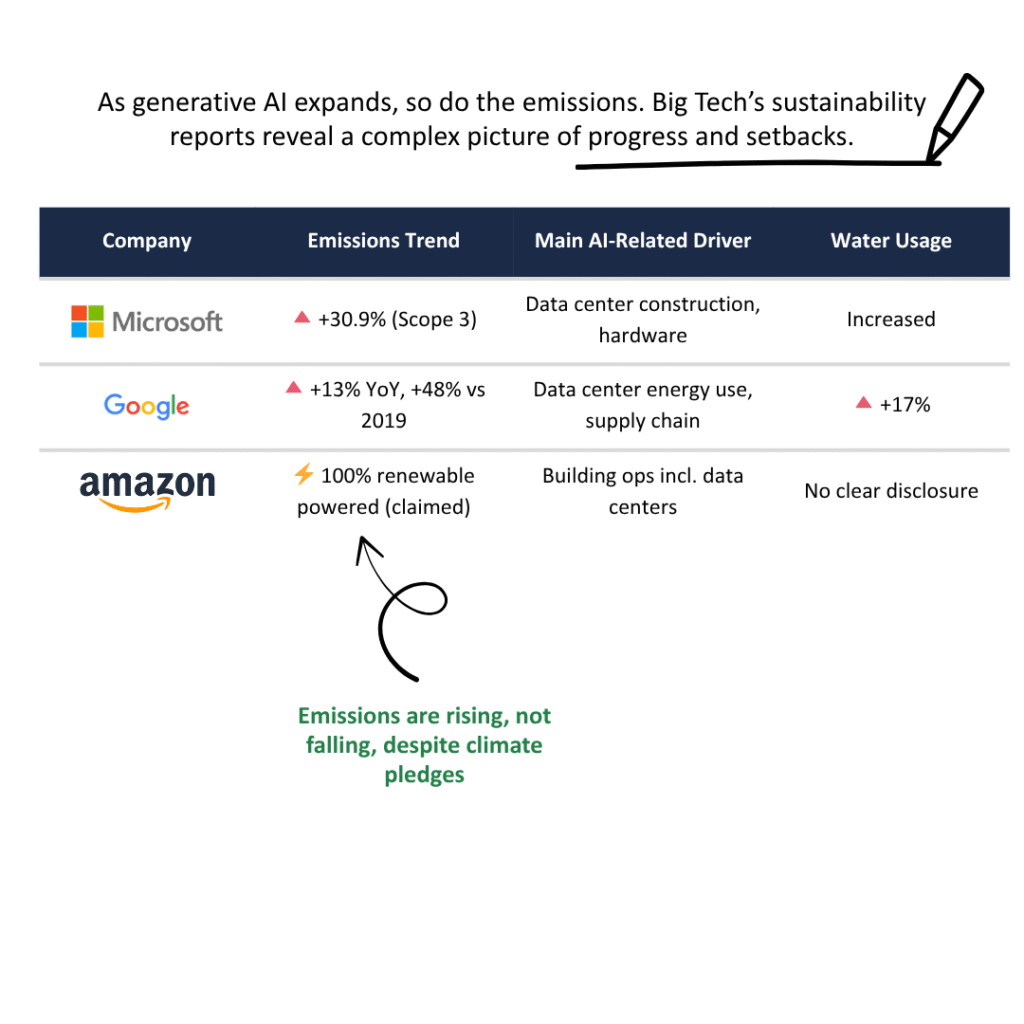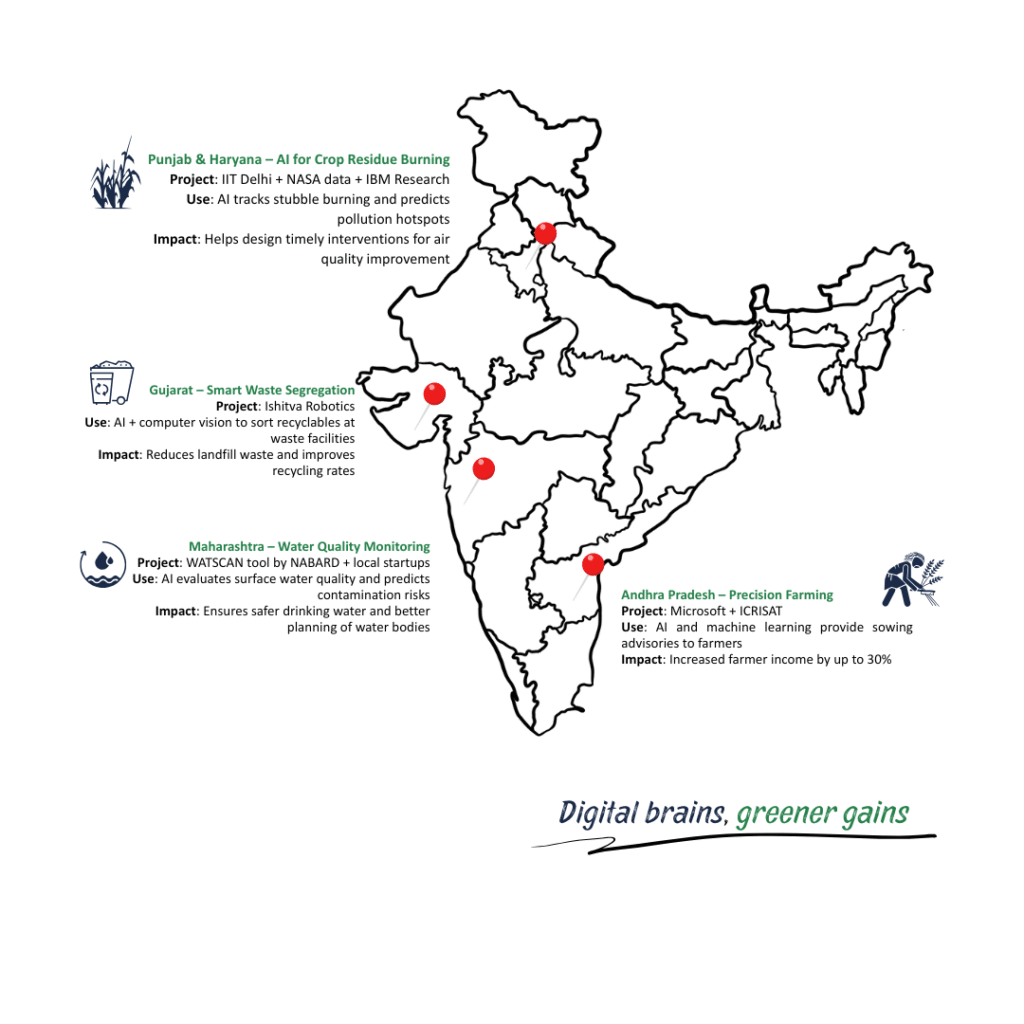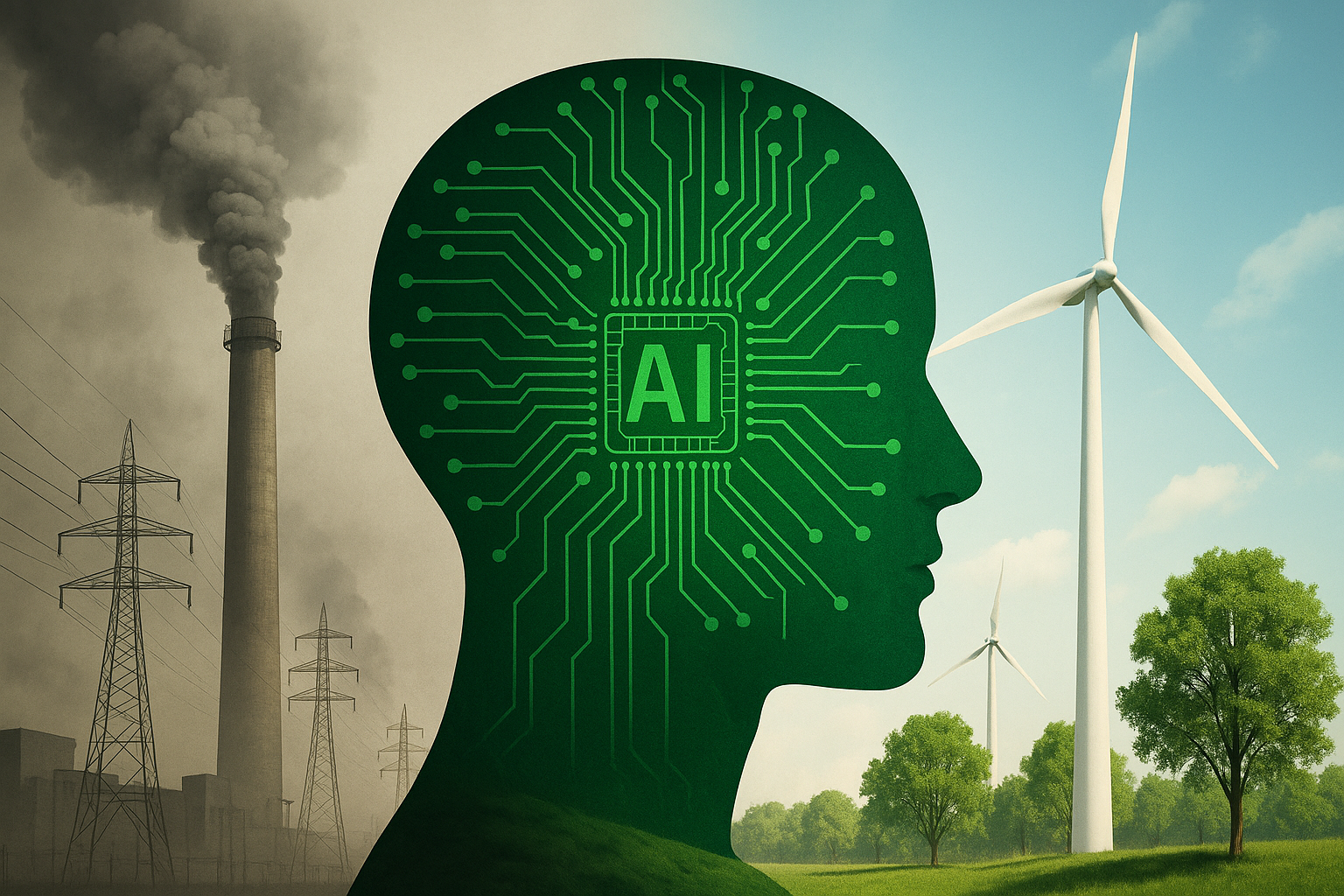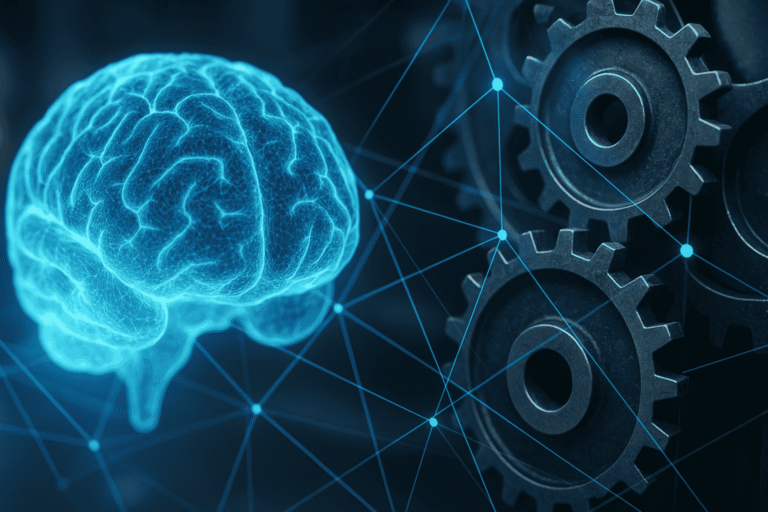In our digital renaissance, artificial intelligence isn’t just a breakthrough—it’s an energy revolution. McKinsey analysts highlight a staggering projection: global data center power use is expected to rise from around 70 gigawatts today to over 220 gigawatts in just five years, driven largely by generative AI workloads. That means entire new regional power grids, from Wisconsin to Wyoming (equivalent to Maharashtra to Manipur), must be engineered to support this rapid growth.
Innovation vs. Emissions: The Double-Edged Sword
On the one hand, AI fuels innovation—transforming healthcare diagnostics, optimizing supply chains, and accelerating climate modeling. It holds the promise of enabling smarter grids, better resource allocation, and scientific breakthroughs unseen before. On the other hand, running this transformative technology comes at an environmental cost—one that unfolds across multiple scales.
AI as an environmental villain
Generative AI models—like today’s trillion-parameter large language models—require hundreds to thousands of megawatts of training power. Deloitte reports that training some models demands as much as 1,287 MWh per run, while a single AI-powered search query can now consume 10–100× more energy than a traditional search. The astronomical energy demand of data centers is straining electrical infrastructure—and in many regions, utilities are deploying fossil fuel–powered plants just to keep up.
In the United States alone, power-hungry data centers now consume more electricity than entire cities—with McKinsey warning that powering a gigawatt-sized facility is roughly equivalent to serving 800,000 households. Public health risks rise in parallel, as sulfur dioxide and particulate emissions from fossil-fueled electricity plants disproportionately affect vulnerable communities.
AI isn’t only thirsty for power—it’s surprisingly water-hungry too. Recent lifecycle studies show that training large models like GPT‑3 has consumed up to 700,000 liters of clean water, and everyday AI usage can consume 0.5 liters per 10–50 prompts. Globally, data center water usage is on pace to reach 4–6 billion cubic meters by 2027, more than half the annual withdrawals of the UK. And perhaps most troubling—two‑thirds of new data centers are being built in already water-stressed regions like Texas, Saudi Arabia, and parts of India.
Behind every AI model is a physical infrastructure forged from rare earth metals and high‑energy chip fabrication. The materials extraction, manufacturing emissions, and eventual hardware turnover contribute to significant carbon and e‑waste burdens. It’s estimated that AI will add up to 12% of global e‑waste by 2030, with much of it ending up unrecycled and hazardous.

India is rapidly positioning itself as a global leader in artificial intelligence—and at the heart of this journey are its emerging AI-ready data centres. Driven by massive investments from global giants like Microsoft, Amazon, and Reliance–Adani, the nation is experiencing explosive growth in digital infrastructure. Local officials and industry experts forecast a need for an additional 40–45 TWh of electricity and 45–50 million sq ft of real estate by 2030 to support AI workloads alone.
As of mid‑2025, data centres in India consumed 139 billion kWh annually, accounting for about 2% of national electricity use, with projections rising sharply as AI-intensive operations grow. Crucially, 70–80% of this power comes from coal, which continues to dominate the energy mix, especially in data‑centre-heavy states like Maharashtra and Delhi NCR. India’s clean capacity mark—now surpassing 50% of installed generation capacity—represents a major advance. But actual generation still heavily leans on fossil fuels, complicating efforts to keep data centre operations low-emission.
Due to geographical reasons data centres in India consume exorbitant water directly for cooling and indirectly through non-renewable electricity generation, exacerbating water scarcity in India, one of the world’s most water-stressed countries. In Bengaluru alone, data centres use 1.4 crore litres of water daily, equivalent to nearly 41,900 households. Mumbai, Delhi, and Chennai also face an increasing water crisis. Most of these data centres have begun to implement water recycling and sustainability measures, but the extent varies by operator and location.
AI as a Climate Ally
After reading about the surging emissions, water use, and delayed climate targets from major tech giants, it’s easy to cast AI as an environmental villain. But that’s only one side of the story. In fact, AI is also proving to be one of the most promising tools in our fight against climate change.
Across the globe, AI is being used in innovative and powerful ways to mitigate, adapt to, and respond to environmental challenges. For example, AI can analyze satellite imagery to detect deforestation in near real-time, map global biodiversity threats, or measure iceberg melt rates 10,000 times faster than a human could. These capabilities are revolutionizing how scientists and policymakers understand and respond to climate threats. Many data center operators now source renewable energy or engage in large-scale hydro or nuclear PPAs, such as Google’s $3 billion deal for hydroelectric capacity and efforts by Microsoft to power AI infrastructure with carbon‑free nuclear energy.
At COP28, a high-level event titled Artificial Intelligence for Climate Action showcased how AI can accelerate implementation of the Paris Agreement. From forecasting extreme weather events to optimizing renewable energy systems, the applications are wide-ranging—and growing.
There’s also a less intuitive benefit: lower emissions from digital creative work. A recent study compared the carbon footprint of human-led writing and illustration to that of generative AI tools like ChatGPT, BLOOM, DALL·E 2, and Midjourney. The result? These AI tools had a lower overall carbon impact—even after accounting for the energy and hardware they use—than their human counterparts. While this doesn’t mean AI is a blanket solution, it challenges assumptions and shows how nuanced the comparison needs to be.
Tech and energy leaders—including Schneider Electric in collaboration with Nvidia—are deploying AI-powered cooling optimization and rack-level thermal management to reduce energy consumption by up to 20%, while liquid cooling technologies help cut water use.
Across India, algorithms are helping clean our air, protect our water, and make farming more sustainable already.

Of course, this doesn’t erase the growing energy demands of large-scale AI systems. But it does raise a vital point: the future of AI and the environment isn’t inherently doomed. With thoughtful regulation, greener infrastructure, and ethical deployment, AI could become a powerful force for sustainability – not just a threat to it. The dual nature of AI’s environmental impact – one side powered by energy, water, and materials demands, and a counterbalance powered by innovation, efficiency, and sustainability applications.




